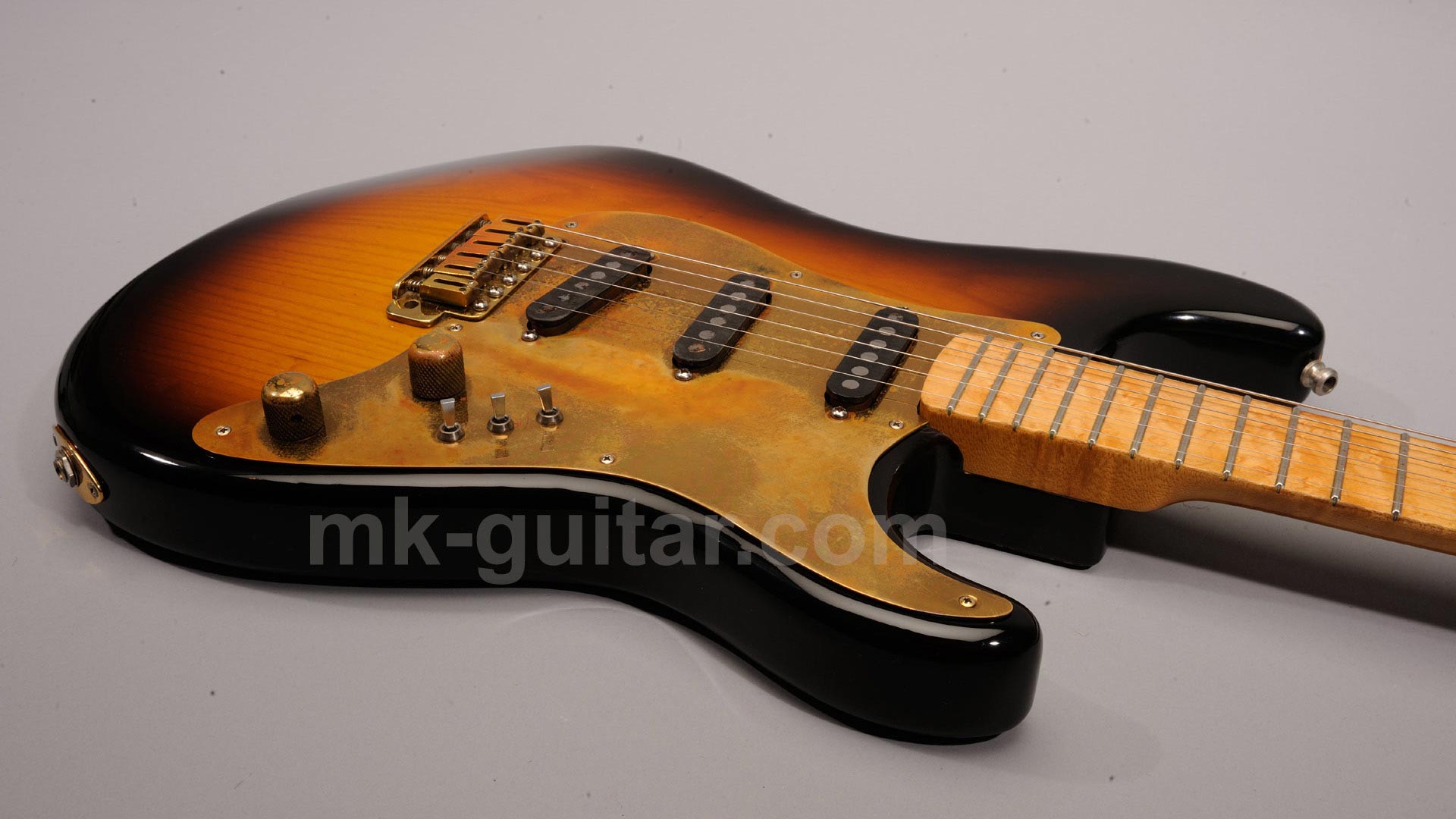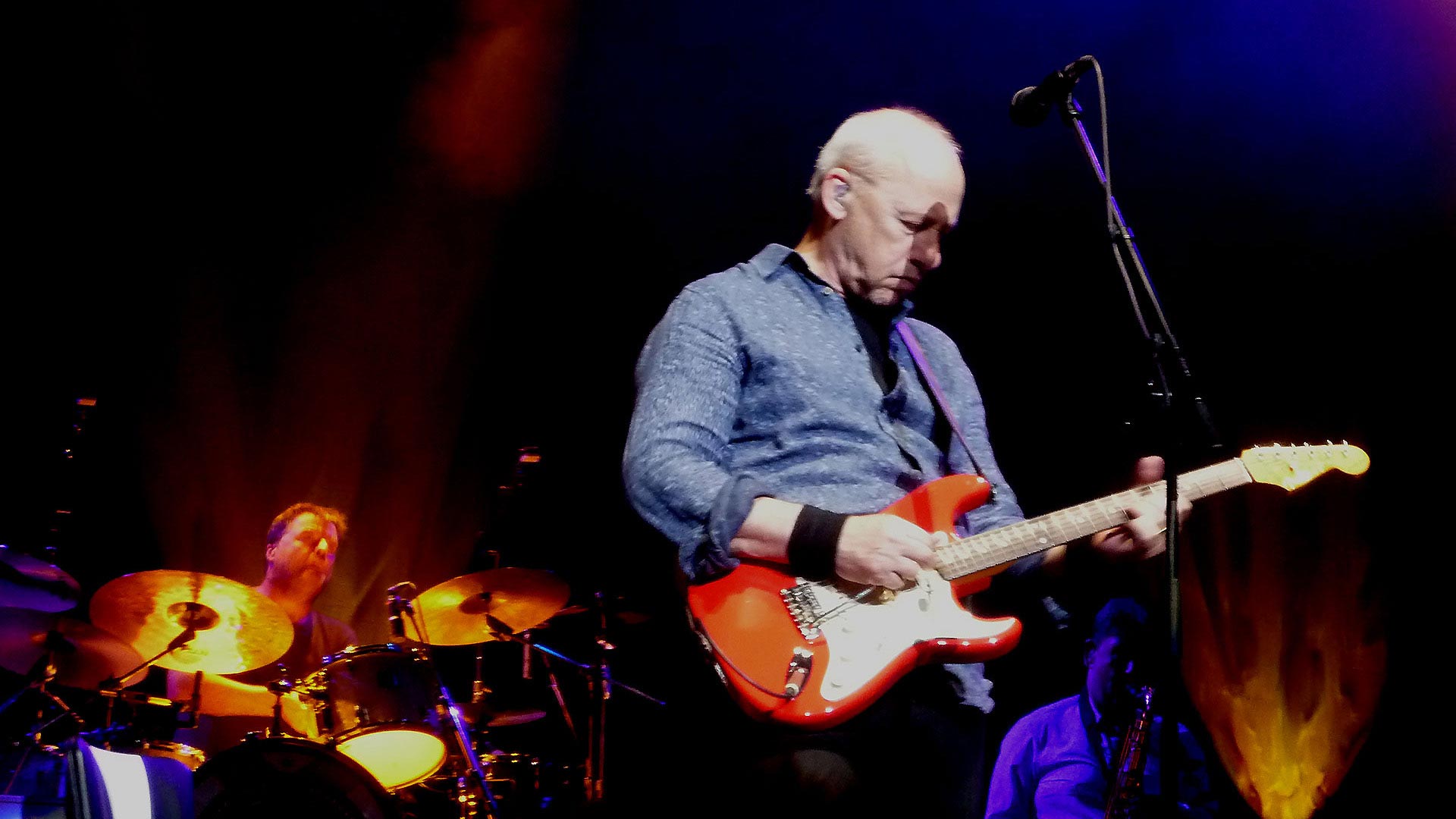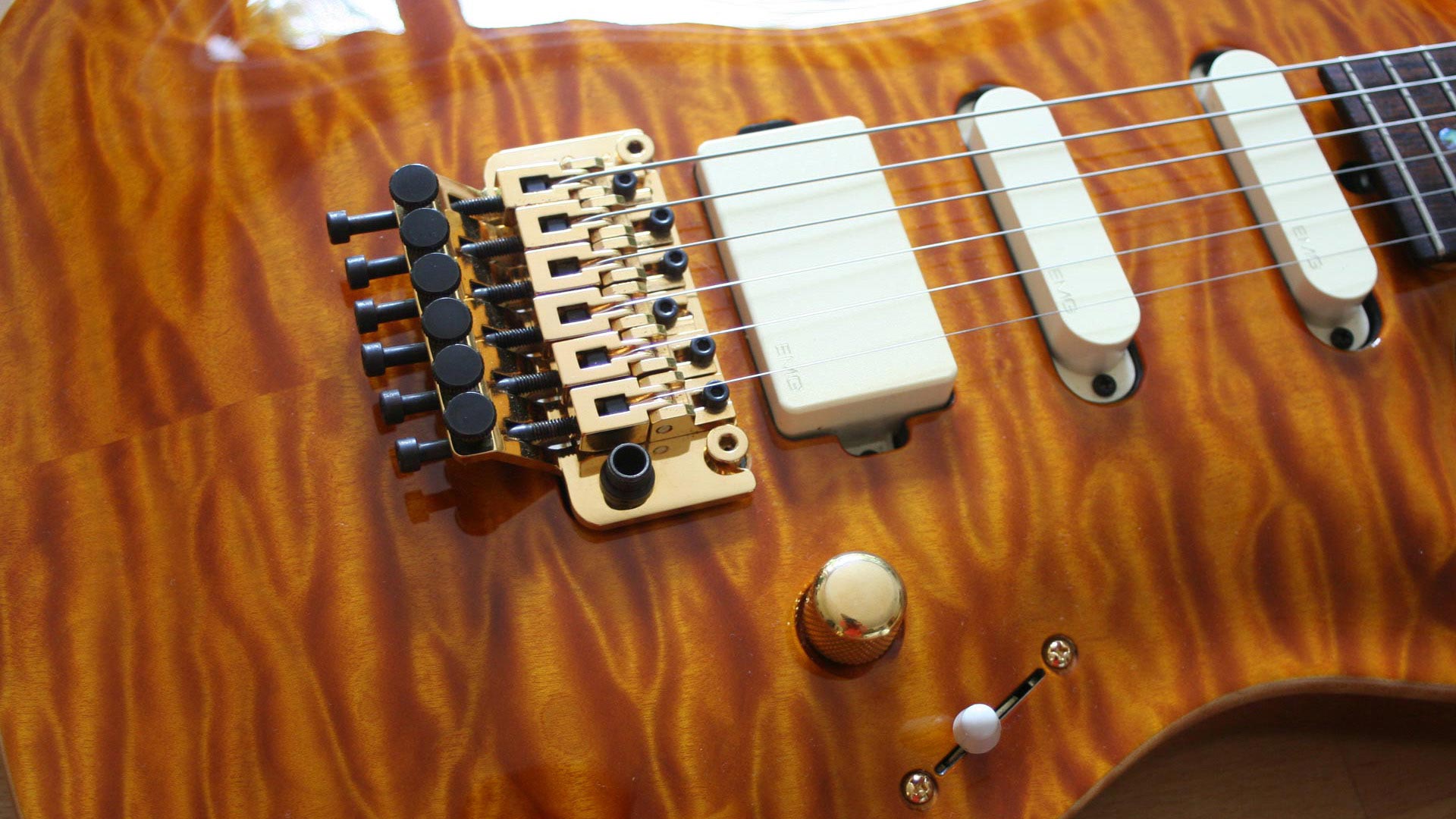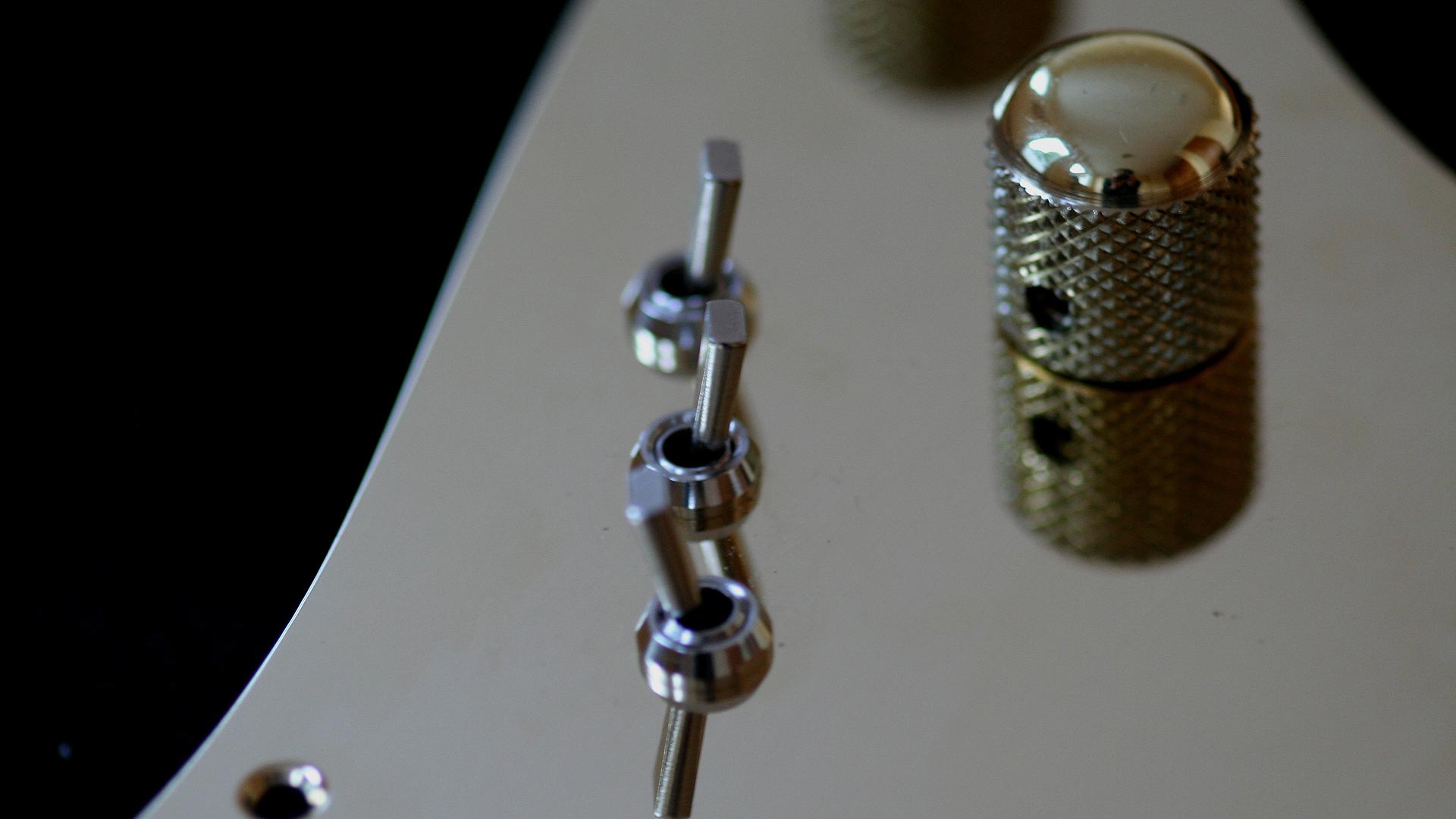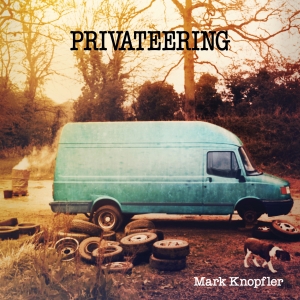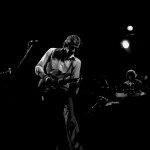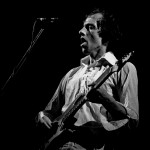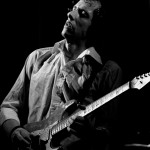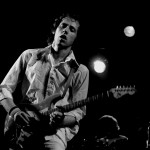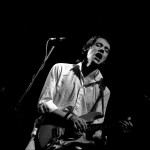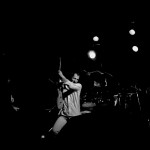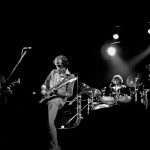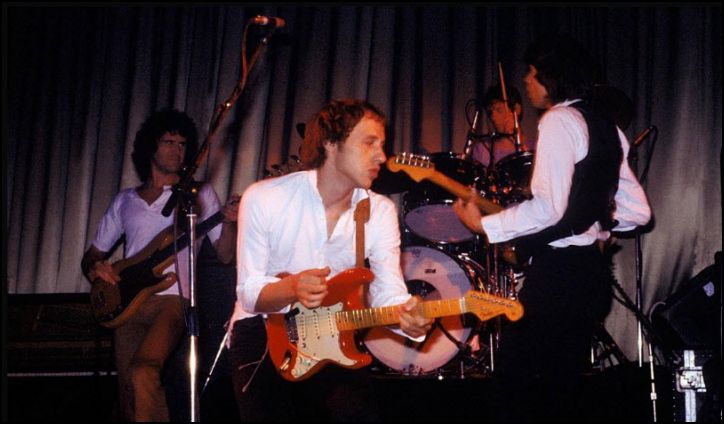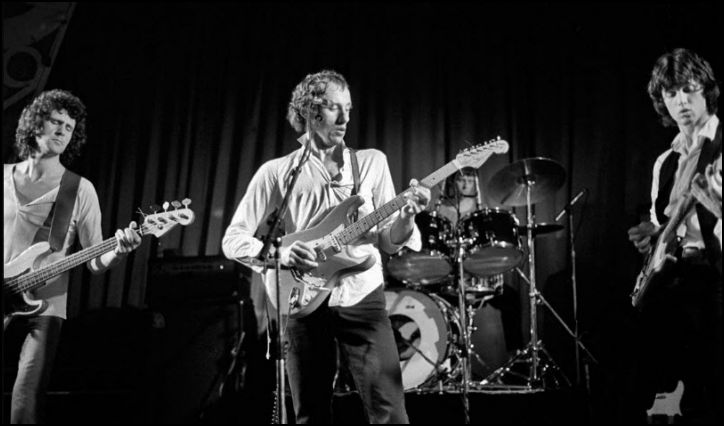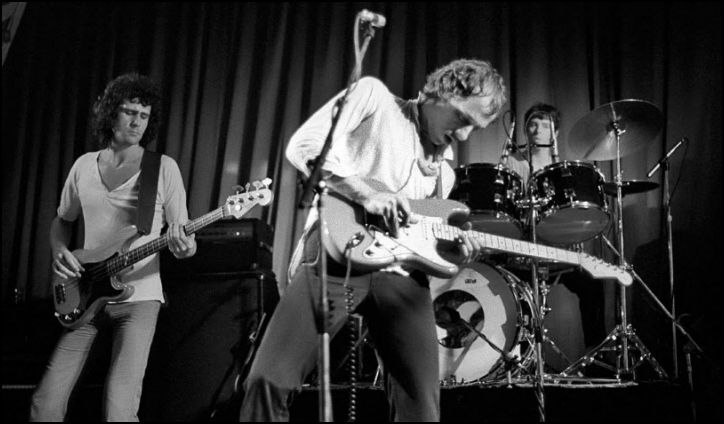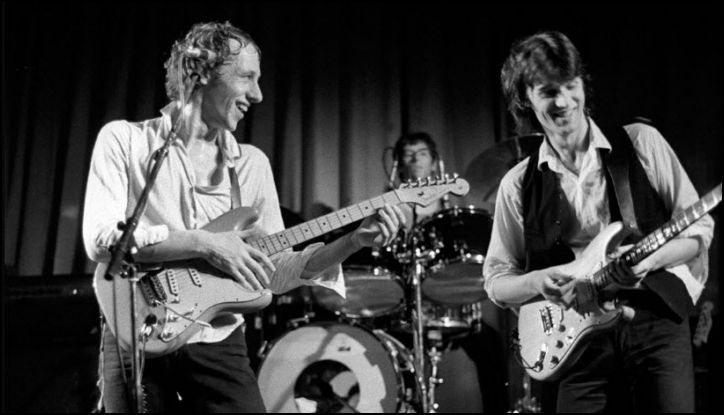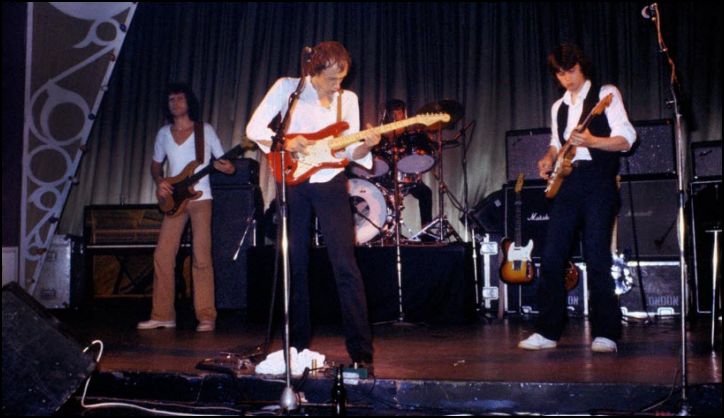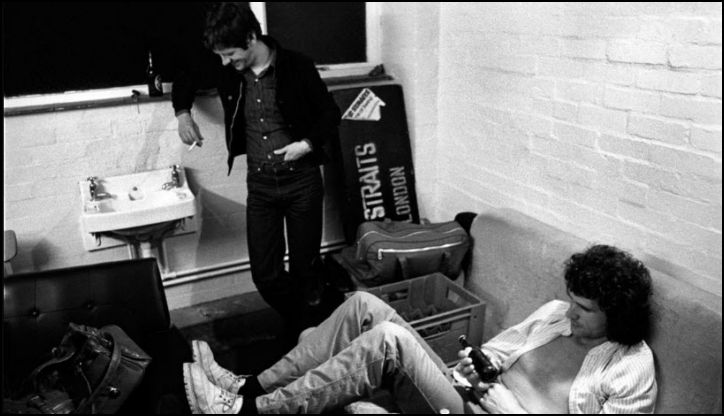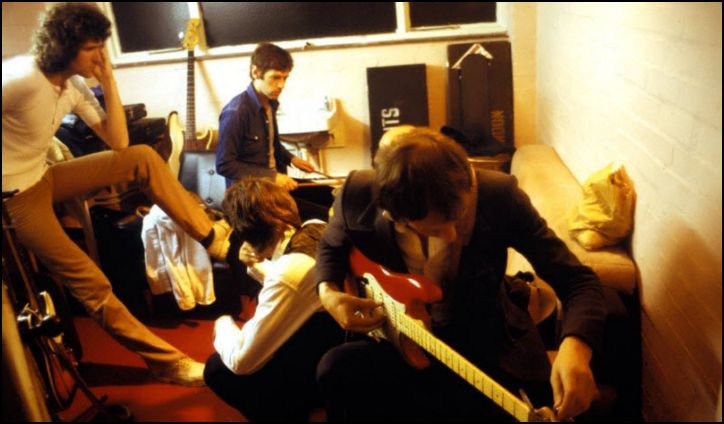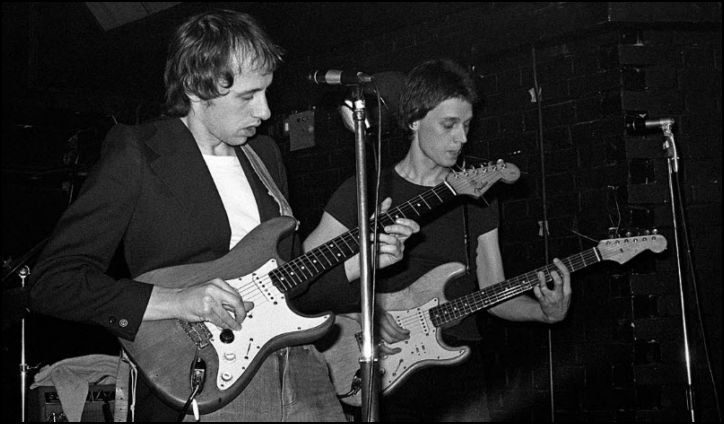Crazy – J.J. Cale’s Harmony guitar – pictures and video of the inside
These pictures are nothing new neither secret, I saw them for the first time so many years ago in a J.J. Cale songbook. I stumbled upon them again today, and just thought that these are simply worth to have a look at (and I know that J.J. Cale ranks high among us Mark Knopfler fans). Just to make it clear: this is not what the guitar looks like from the back after removing some backside lid, this was the way he played it in the studio and on stage.
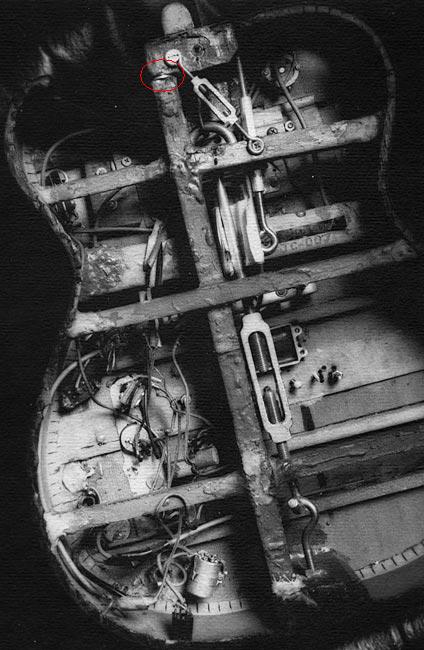
Crazy, isn’t it. Note an even crazier detail: What you can see in the red circle is a coin which he put in to adjust the action of the guitar (it bends the top a bit so that the action becomes higher)!!
This is the matching picture of the front side:
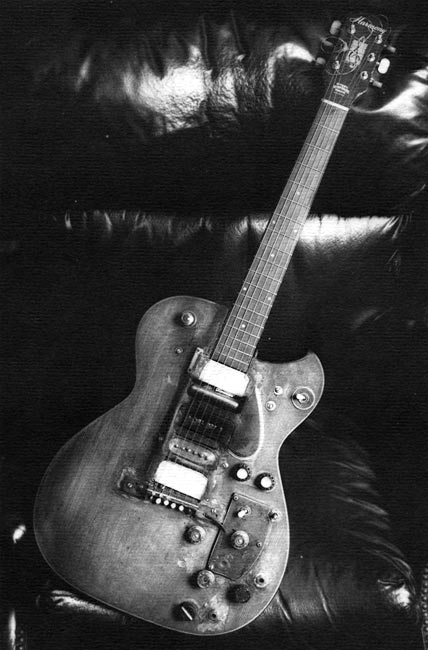
And here is one showing him on stage with the beast:
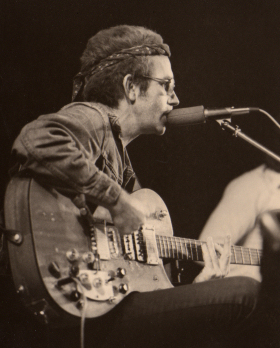
To even top all this, here is a video in which J.J. shows his guitar – he made a hole for a mic with a hammer !!!! 🙂
